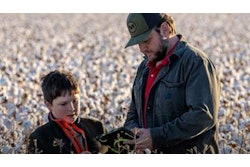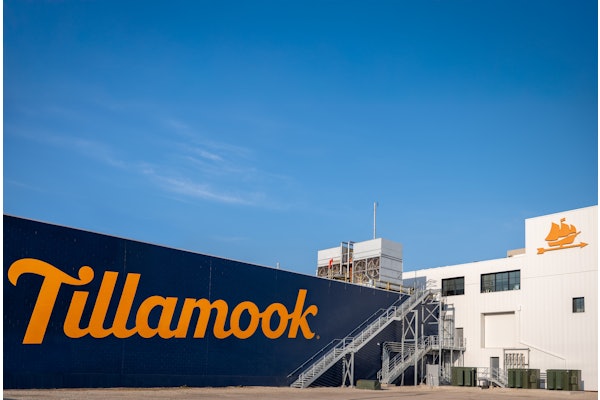Welcome to Sustainable Packaging Explained, your Guide to Sustainable Materials, methods, and package design. Produced by the Emerging Brands Alliance in conjunction with Packaging World. In this episode, we are exploring compostable packaging. We know there's been a growing interest in sustainable packaging options, including compostable packaging from both brands and consumers.
But what exactly is compostable packaging and how does it work? Compostable packaging is made from plant-based materials that can break down into organic matter in a composting environment. This means that the packaging will decompose into natural elements without leaving any harmful residues. It should be noted that compostable and biodegradable are not necessarily the same thing.
A biodegradable item may break down into smaller bits, but these components may not provide nutrients when used as compost. Some materials used in compostable packaging include wood pulp, corn starch, sugar cane, and bamboo, and researchers and companies are innovating to develop new plant-based materials for compostable packaging.
For example, mushroom based packaging made from agricultural waste and fungi has been developed as a compostable alternative to polystyrene foam. Currently compostable packaging is being used in a variety of consumer packaged goods, such as food and beverage containers and wrappers bags, and even clothing.
Large brands such as Patagonia and Nike are exploring using compostable packaging with their products, as have many emerging brands. In addition, several cities and municipalities have implemented composting programs that accept compostable packaging, creating a market for these materials. Packaging World Editor Anne Marie Mohan tells us more about compostable packaging.
One major CPG brand that's been at the forefront of compostable packaging is PepsiCo with its FritoLay and Quaker Oats Food Divisions. In 2010 on the bleeding edge of technology, PepsiCo introduced a compostable snack bag made of sugar cane based plastics for its Sun Chip snack brand. Unfortunately, there was consumer backlash against the packaging because it made such a loud crinkling sound when it was handled, but PepsiCo didn't give up.
And in 2021, they introduced their second generation compostable snack bag made of plant-based plastics for their Off The Eaten Path Brand, signaling their intent to continue with this packaging. In recent days, they unveiled a greenhouse learning lab. At Frito Le North America's headquarters in Plano, Texas, the lab is meant to be a place where its R&D teams can test and analyze new packaging materials onsite.
Meanwhile, PepsiCo is also a member of the composting consortium, which recently announced that it will be conducting a pilot to test the degradation of compostable packaging in real world industrial composting facilities.
One of the biggest advantages of compostable packaging is that unlike some traditional packaging materials like plastic, compostable packaging can be broken down by nature and does not contribute to the accumulation of waste in landfills or oceans. Additionally, compostable packaging can be used to support sustainable agricultural practices by being added to composts, which improve soil health and reduces the need for synthetic fertilizers.
Compostable packaging does have challenges. One of the main challenges is that compostable packaging can only break down in specific conditions such as industrial composting facilities or home compost bins. When compostable packaging is not disposed of properly, it can end up contaminating recycling streams leading to additional waste. For much of the US, the lack of industrial composting facilities also poses a huge challenge.
Consumer education is important when it comes to compostable packaging. Consumers need to understand the proper disposal methods and the difference between home compostable and commercially compostable packaging. Home compostable packaging is designed to break down in backyard compost bins, while commercially compostable packaging requires industrial composting facilities with specific conditions such as temperature and humidity control to break down properly. To address this, many brands include instructions on how to dispose of their compostable packaging, either on the packaging itself or on their website.
Additionally, some cities and municipalities have launched educational campaigns to inform consumers on the proper disposal of compostable packaging. Compostable packaging can be an eco-friendly alternative to traditional packaging materials. While there are challenges to its use, such as proper disposal, the development of new materials, and increasing consumer education show promise, and as more brands and consumers embrace compostable packaging, it has the potential to make a significant impact on reducing waste in promoting a circular economy.
Recently, PMMI, the Association for Packaging and Processing Technologies at the American Institute for Packaging in the Environment collaborated on a survey of CPG brands to find out their thoughts on trends in packaging materials over the next 10 years. One of the most significant findings was that overwhelmingly they see a shift to compostable packaging.
This will be a huge challenge. However, as much investment will be needed in composting infrastructure. Right now, only 11% of US households have access to industrial composting. As always, it is best to perform a lifecycle analysis of a product to determine if compostable packaging would be a viable option for this situation.
Thanks for watching, and be sure to subscribe to our YouTube channel for more videos on packaging and scaling operations. And join us at the Emerging Brands Alliance for year Round resources to grow your brand.























